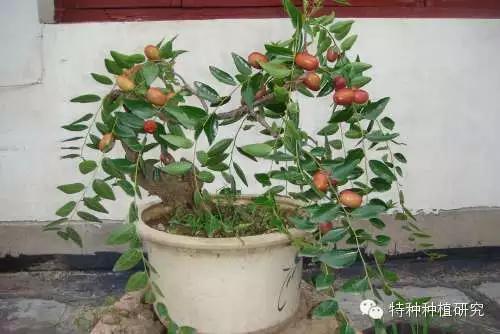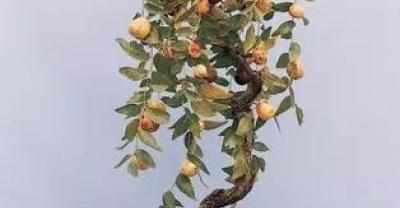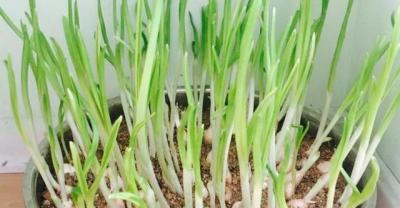Planting and management of potted jujube
Guobang (WeChat account: shuiguobangv)
Introduce a variety of fruit, flowers and other pot technology and a variety of household ideas, we advocate green, ecological, environmental protection, to be an urban farmer!
The tree has early fruit, small leaves, beautiful branches, red fruit and rich nutrition. Some ornamental jujube varieties are especially suitable for potted plants, which can blossom and bear fruit in the same year, which not only has high ornamental value, but also has certain economic value. Potted jujube trees can be planted in open spaces with better lighting conditions, houses, balconies of buildings, etc. The key techniques of planting and management of potted jujube are as follows:

(1) basin and basin soil. Potted jujube pots can be used with tile pots, pottery pots, plastic pots, etc., family rooms or balconies can choose tile pots with inner diameter 25~45cm, high 20~25cm or so; if placed in places such as roads and flower beds, larger earthen pots should be chosen. Jujube has strong adaptability to soil, but due to the growth and development of potted jujube in limited soil, potted soil requires loose and fertile, good permeability, strong water and fertility conservation, in order to adapt to root growth. 4 parts of garden soil, 2 parts of humus or humus soil, 2 parts of barnyard manure and 2 parts of sand can be fully mixed according to volume proportion and sifted as basin soil.
(2) varieties and seedlings. Potted jujube trees should choose varieties with early fruit, high fruit setting rate, long fruit hanging period, neat and beautiful fruit shape, bright and clean fruit surface, strong stress resistance, compact tree shape, branches and fruits with special shape and ornamental value. such as Longzao jujube, Hulu jujube, teapot jujube, fetal red and so on. In order to improve the ornamental ability, several more varieties can be grafted on one seedling. The seedlings choose strong jujube Zhuo with developed root system, many fibrous roots, sturdy stem, uniform branches and beautiful branches.
(3) the time and method of potting. Generally speaking, it is good to serve the pot just before the spring sprouts. At this time, the root is fast and it is easy to survive. Before putting on the basin, cover a protruding tile facing upward on the water seepage hole at the bottom of the basin, then spread about 2cm thick slag, and then put the culture soil for planting; before planting, trim the seedling root system, cut off the wound, cut off the excessive length of the diseased root, injured root and coarse root, and retain the fibrous root as much as possible. When planting, the root system should be stretched and closely connected with the pot soil, and the planting depth should be level with the original soil mark of jujube seedling, and the soil should be compacted so that the edge of 2cm should be set aside for watering convenience. Pour water into the basin in time, then put the basin in the leeward and sunny place to keep the soil moist in the basin.

(4) watering and fertilization. The watering quantity and watering time should be determined according to the change of water content in basin soil, the characteristics of water demand of jujube and the season. If the weather is dry and the temperature is high, it should be watered frequently and more; small trees with less branches and leaves should be watered less; large trees with more branches and leaves should be watered more. Early spring and late autumn should be watered when the afternoon temperature is high, and summer should be watered before 10:00 or after 4 p.m., so as to avoid drastic changes in basin soil temperature and affect root growth. Covering sawdust on sprayed soil can maintain moisture, reduce watering times and keep constant temperature, which is beneficial to the growth and fruiting of jujube.
The fertilizer of potted jujube should be mainly organic fertilizer, and the fermented cake fertilizer should be selected by applying appropriate amount of chemical fertilizer and organic fertilizer. Organic fertilizer can be applied when changing the basin, or the mature organic fertilizer can be diluted and poured into the basin soil, a small number of times, an average of once a week. Excessive amount of fertilizer applied at one time will cause reverse osmosis, resulting in shrinking leaves of fruit trees and death of fruit trees. Special care should be taken not to apply raw fertilizer. The application of unripe fertilizer gives off a bad smell, pollutes the indoor air, and the high temperature produced by fermentation in flowerpots can damage the roots. Therefore, bean cakes, hoof slices or inedible offal such as chicken, duck and fish, as well as chicken and duck dung and rabbit dung should be soaked in water in advance, placed in the sun and fully fermented, and then applied after ripening. Also do not apply around the root neck fertilizer, around the root neck fertilization, not only not conducive to the absorption of the moon, but also easy to burn the root neck of the fruit tree, so that the leaves gradually turn yellow and fall off, affecting the normal growth. The correct way is to bury the mature organic fertilizer or urea, potassium dihydrogen phosphate and other chemical fertilizers in the soil beside the flowerpot, or apply it far away from the root neck, cover it with a layer of soil, and then water it.
Foliar fertilizer spraying can be adopted during fruit development. The concentration of urea and potassium dioxane phosphate is 0.3%-0.5%, the concentration of calcium superphosphate is 2%-0.5%, the concentration of plant ash is 2%-0.5%, the concentration of boric acid or borax is 0.2%-0.3%, the concentration of ferrous sulfate is 0.2%-0.5%, and the concentration of zinc sulfate is 0.3%-0.5%.
(5) Flower and fruit management. Girdling at flowering stage can increase the fruit setting rate. When 30% to 40% flowers have bloomed on the tree, girdling is carried out at the base of the trunk, generally peeling the mouth of 0.2cm. Jujube trees like light, potted jujube trees should be placed in a place with good ventilation and light transmission to facilitate fruit setting. Spraying 10~15ppm gibberellin at flowering stage can increase the fruit setting rate. Picking the hearts of jujube heads and secondary branches at flowering stage can increase the fruit setting rate. Fruit thinning should also be carried out when there are too many fruits on potted jujube trees, or when the fruit is dense and uneven. Thinning out some of the over-dense parts of poor quality, smaller fruit.
(6) shaping and pruning. Potted jujube trees are mainly ornamental, and the trunk shape and happy shape can be selected. The trunk height is about 20~30cm and there are about 3-5 main branches. Shaping and pruning should be mainly summer pruning, through sprouting, coring, pulling branches, taking branches and other pruning methods, through flowering ring peeling (open armour), ring cutting and other methods to improve fruit setting rate, and achieve the purpose of controlling tree growth.
(7) pest control. The main pests of potted jujube trees are stinging moth, tortoise wax scale insect, jujube armyworm, jujube inchworm and so on. When the number of insects is small, they can be killed manually, and insecticides with low toxicity and low residue can also be used for control. The main diseases are rust and anthrax, which can be prevented by spraying multiple Bordeaux solution, carbendazim, carbendazim and other fungicides in late June.
(8) change the basin or soil. After growing in the pot for 3 to 4 years, the potted jujube should be changed into a larger pot, and the pot should be changed before sprouting in spring. After pulling the jujube tree out of the basin, remove the root pad and a small amount of roots, the amount of pruning should be controlled at 20%-30%, ensure that the basin soil is not scattered, move the whole block into the newly replaced large basin, add appropriate amount of nutritious soil from around, and fill it with enough water. If you do not change a large pot of potted jujube, it will take about 3 to 4 years to change the nutritious soil in order to facilitate the growth of jujube. After pulling out the jujube, remove the root pad and a small amount of root system, add the nutrient soil to put the original jujube tree soil into the pot, add enough nutrient soil and pour enough water.
(9) overwintering against cold. In order to prevent the water loss and death of the roots of potted jujube trees in winter due to long-term wind drought, measures of water conservation, heat preservation and anti-freezing should be taken. One is to move the potted jujube to the indoor or corridor or balcony with a temperature of about 0,7 ℃, and water it regularly; the second is to put the potted jujube safely in the greenhouse to survive the winter, and the areas that are not too cold in winter can also cover some grass squatting ground on the pot to survive the winter. In winter, we should often check whether the potted soil is dry, such as potted soil should be watered thoroughly to ensure that potted jujube trees survive the winter safely.
- Prev

Planting methods of potted ice vegetables
Ice pickle, also known as wheatgrass, is native to South Africa and is a saline-alkali plant that can grow on the coast because the liquid of its cells contains salt, which makes the plant itself eat.
- Next

Small method of high yield of bean planting
Bean planting high yield small method beans are also called cowpea, its habits and cultivation techniques and kidney beans similar. The growth characteristics of beans are that rhizobia can fix nitrogen, but...
Related
- Fuxing push coffee new agricultural production and marketing class: lack of small-scale processing plants
- Jujube rice field leisure farm deep ploughing Yilan for five years to create a space for organic food and play
- Nongyu Farm-A trial of organic papaya for brave women with advanced technology
- Four points for attention in the prevention and control of diseases and insect pests of edible fungi
- How to add nutrient solution to Edible Fungi
- Is there any good way to control edible fungus mites?
- Open Inoculation Technology of Edible Fungi
- Is there any clever way to use fertilizer for edible fungus in winter?
- What agents are used to kill the pathogens of edible fungi in the mushroom shed?
- Rapid drying of Edible Fungi

